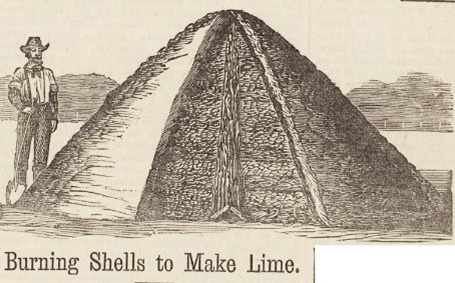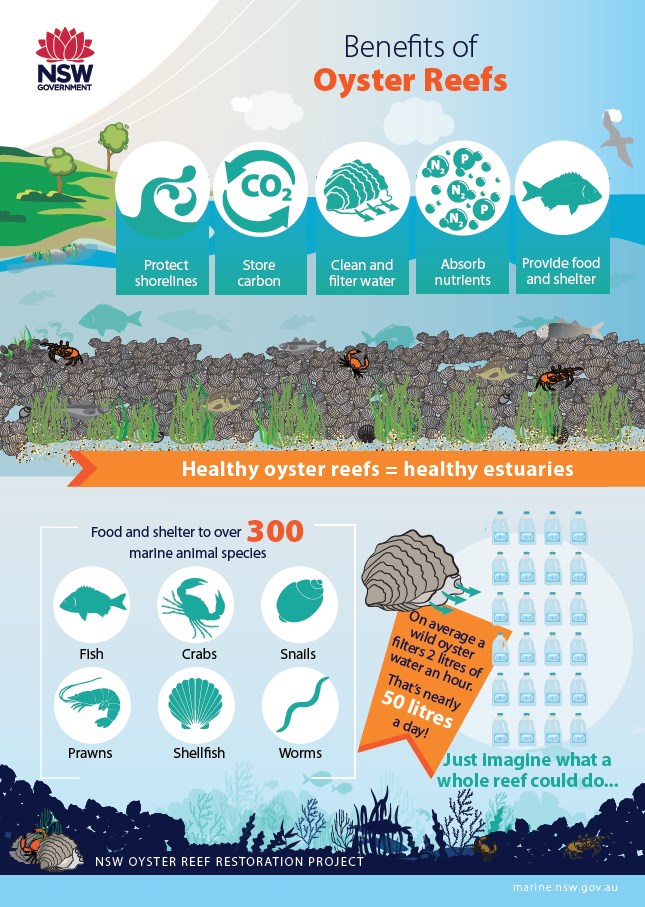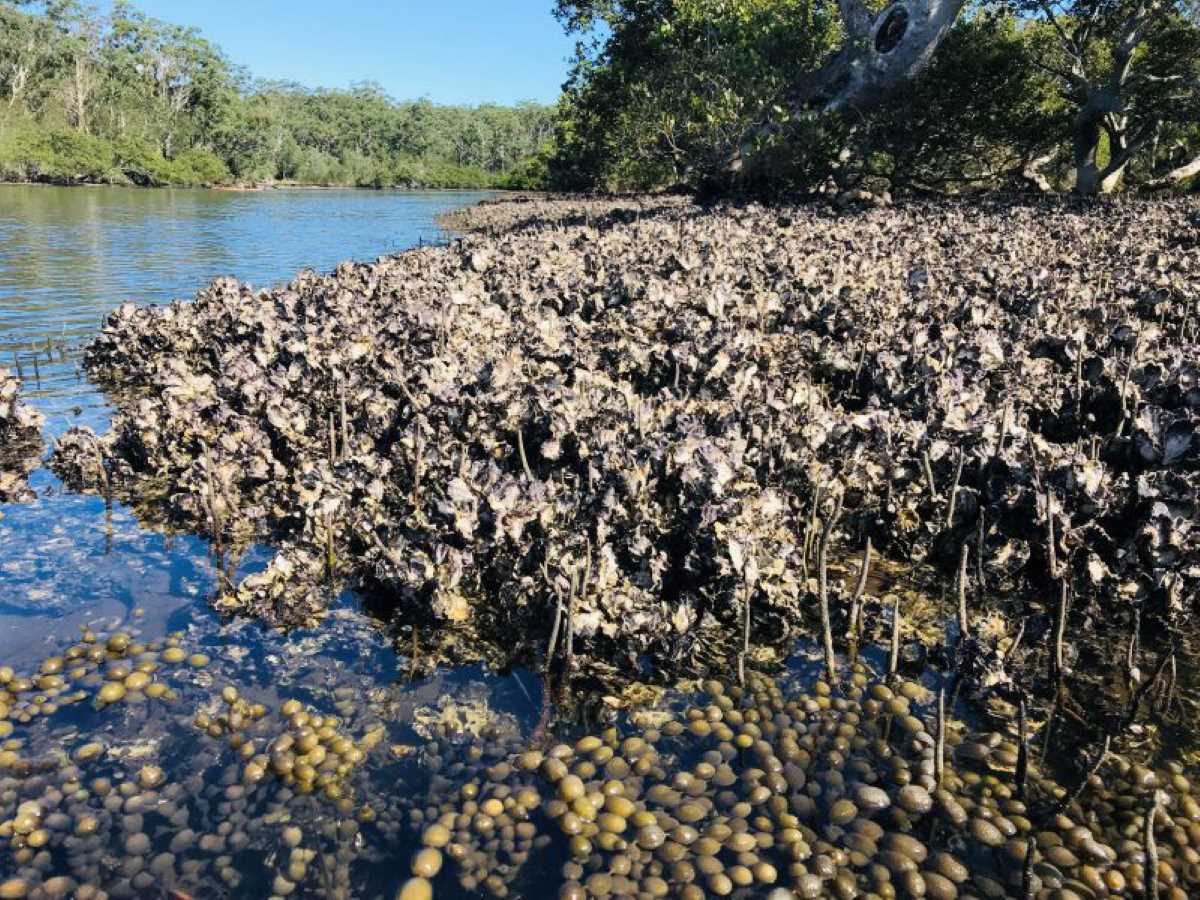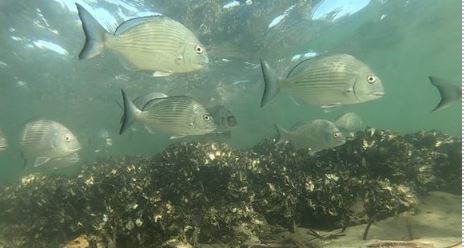Project updates
Good news for fishers: results of oyster reef study promising
5 December 2022
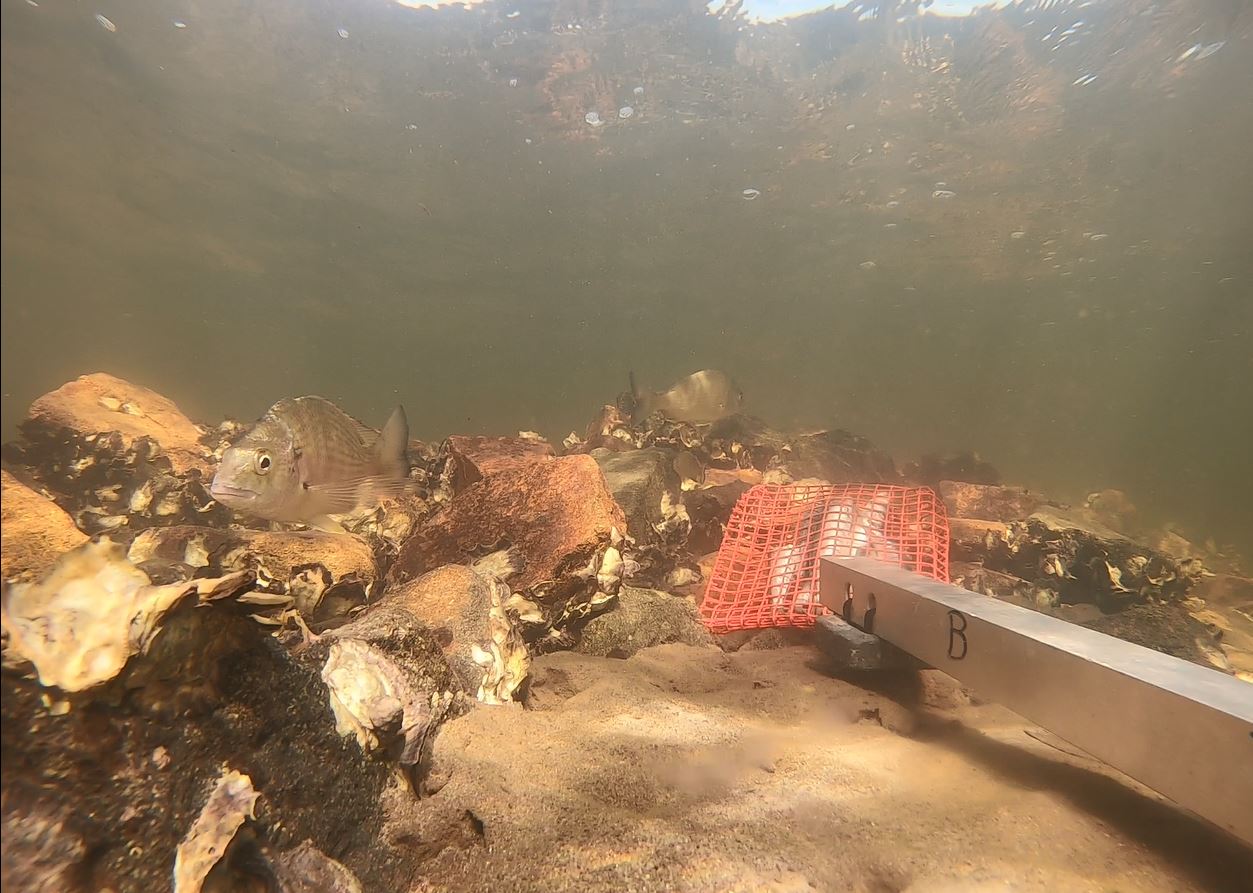
Locals to track oyster growth as citizen scientists
7 September 2022
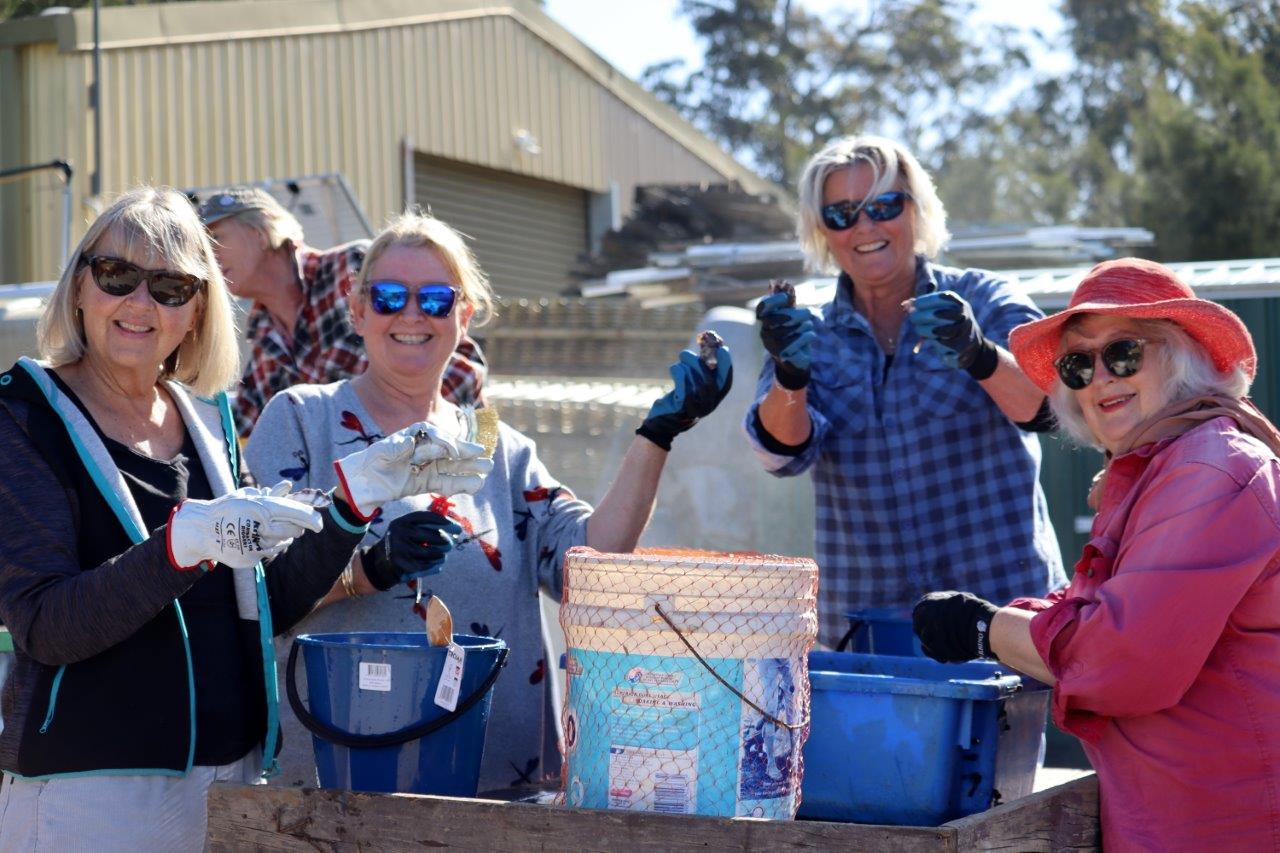
New oyster reef exhibition hits the road
21 February 2024

Oyster reef restoration exhibit opens in Ulladulla
12 March 2024
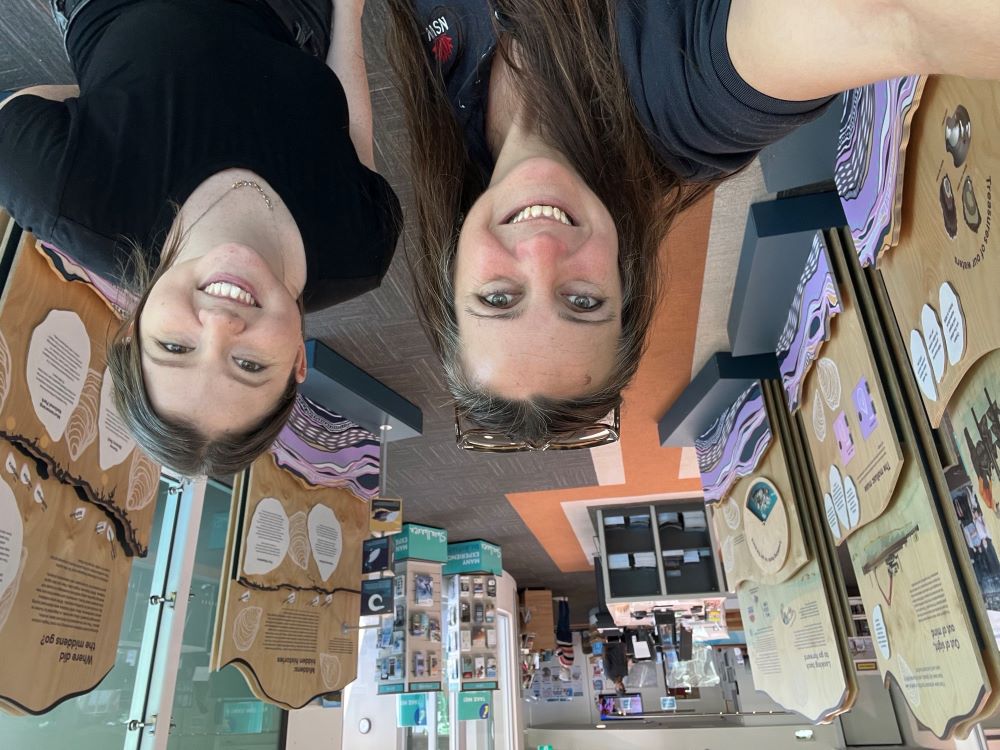
Wagonga Inlet Living Shoreline project wins Innovation award
4 December 2023
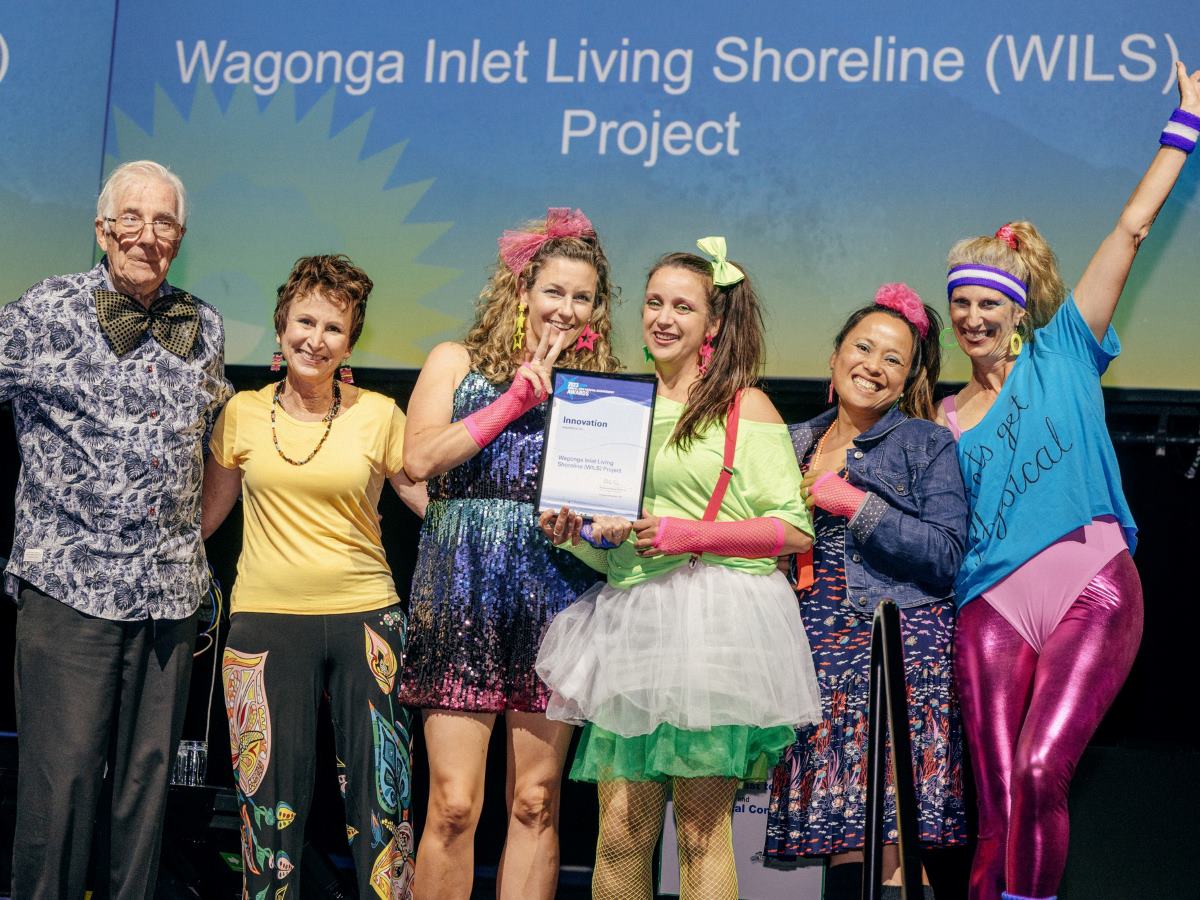
Looking for new life on artificial oyster reefs
17 March 2020
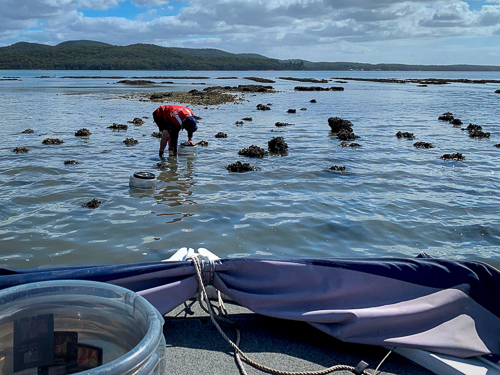
Oyster team inspires next generation of scientists
27 April 2023
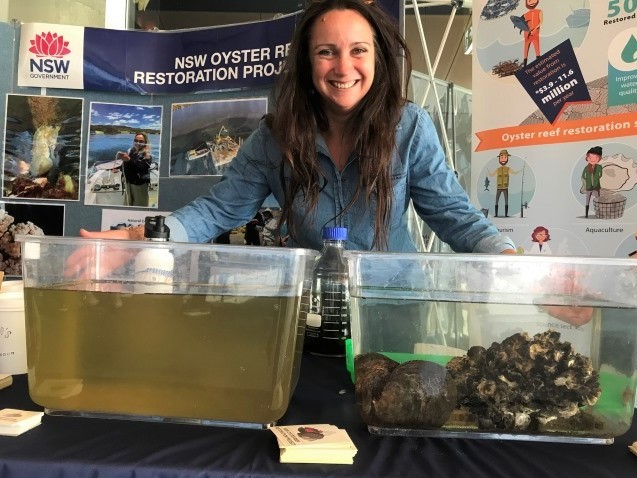
Oyster reef restoration – the survey results are in!
9 August 2019

Leaf Oysters a potential lifeline in reef restoration
22 January 2021
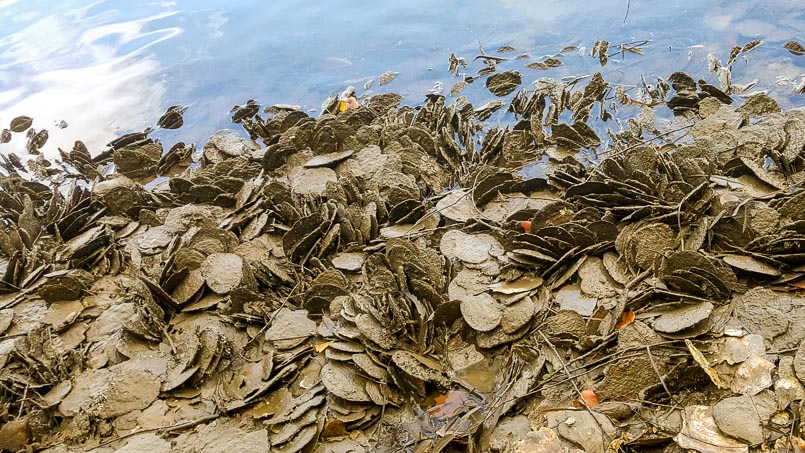
NSW Shellfish reef restoration guidelines available
14 July 2021
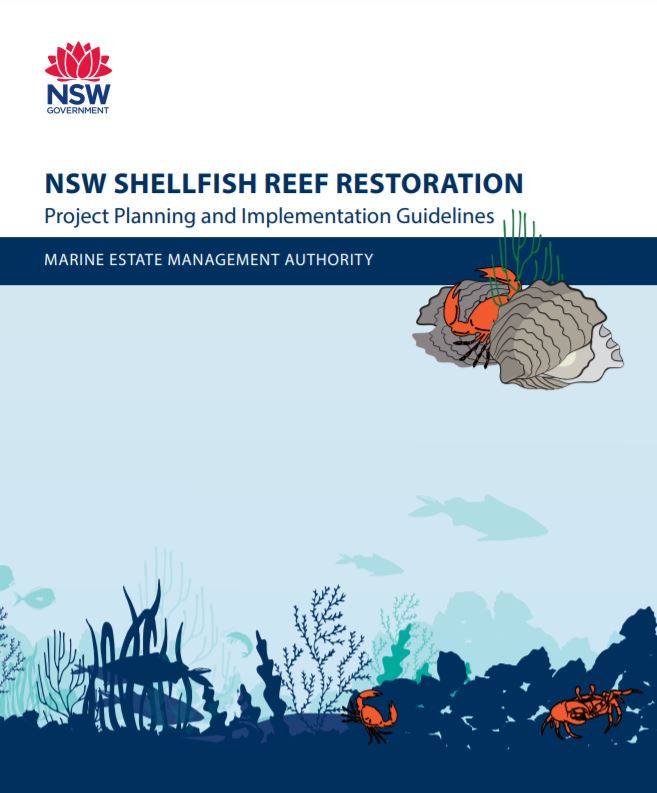
Sydney’s forgotten oyster reefs
11 March 2022
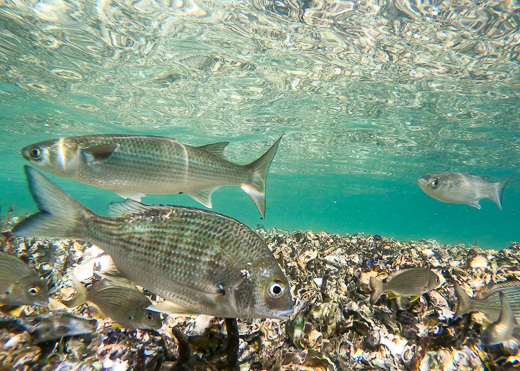
Living shoreline project kicks off in Narooma
9 June 2022
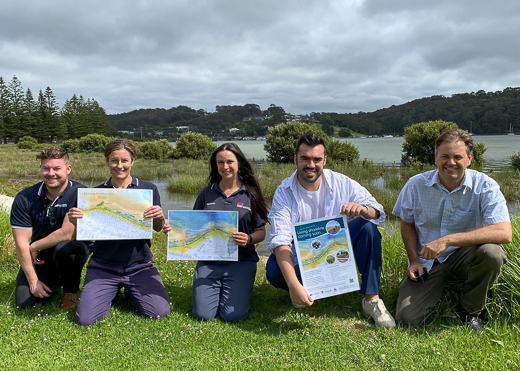
NSW recreational fishers shellfish reef survey
7 April 2020

